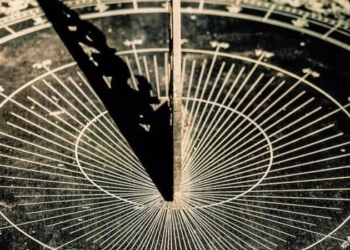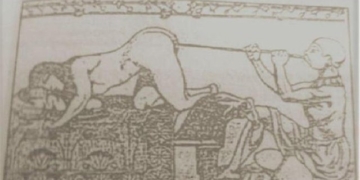Rjukan is a small town in Norway, where sunshine is always considered a luxury because its residents cannot see it from September to mid-March the following year.
The town of Rjukan is nestled among the rugged mountains of Norway, creating a picturesque landscape, which leads to an extraordinary phenomenon – the mountains cast a shadow over the town.
For several months each year, Rjukan experiences a lack of direct sunlight due to its unique geographical location. This fascinating event has earned Rjukan the title of “the town without sunlight.”
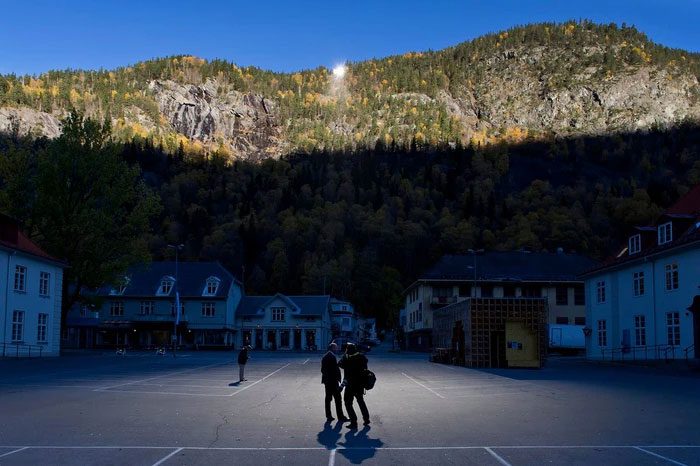
Sunlight is one of the essential natural conditions for human life. It is not only a source of illumination but also a measure of time, an energy source for plants, and has a significant impact on human health.
The Shadow of Rjukan
The lack of direct sunlight in Rjukan is a consequence of its geographical location – the town lies in the Vestfjord valley, surrounded by towering mountains. These mountains obstruct the path of sunlight during the winter months.
From the end of September to mid-March, Rjukan is always shrouded in darkness, or more precisely, in the shadows of the surrounding mountains, leaving its residents without direct sunlight. The shadow cast by the mountains over the town stands as a clear testament to the power of geography in shaping human daily life.
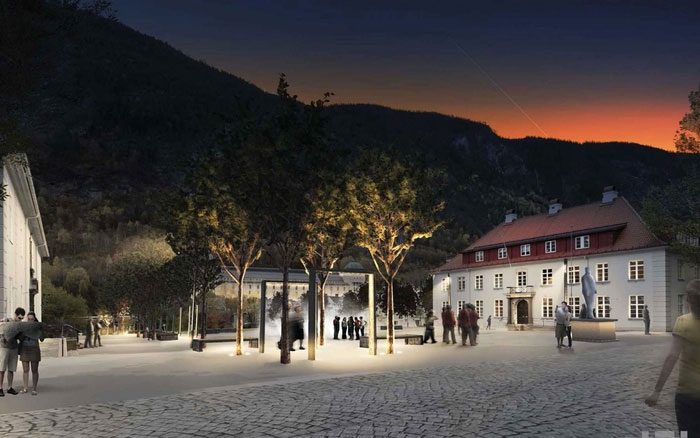
Throughout its history, the people of Rjukan have lived in the shadow of the surrounding mountains. It was not until 2013 that the town installed gigantic mirrors at an altitude of 450 meters on the surrounding mountains to capture and reflect sunlight down to the residential areas.
The town of Rjukan was founded by Sam Eyde in the early 20th century as a hydroelectric production center. The steep mountain slopes were ideal for harnessing the energy of the region’s abundant waterfalls, leading to the development of hydroelectric plants, which played a critical role in Norway’s industrial growth.
However, the very mountains that provide energy also create a natural barrier, depriving Rjukan of sunlight for several months each year.
The absence of direct sunlight poses significant challenges for Rjukan’s residents. It affects their physical and mental health, limits outdoor activities, and impacts crop growth and agriculture.
Prolonged lack of direct sunlight during the winter months can lead to feelings of isolation and vitamin D deficiency, exacerbating the chances of developing seasonal affective disorder (SAD) within the community.
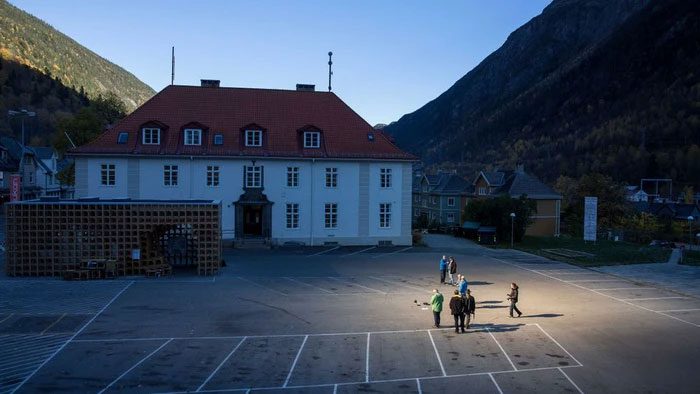
According to “The Guardian,” some residents of Rjukan suffer from seasonal affective disorder (SAD) due to chronic depression from a lack of sunlight. This syndrome was first identified in the 1980s in regions with longer winters than summers, such as Iceland and Canada.
Seeking Solutions for Sunshine
Recognizing the impact of the lack of direct sunlight, the residents of Rjukan decided to address the issue themselves. In fact, the idea of surrounding the town with glass to capture sunlight was proposed by Sam Eyde over 100 years ago, but the technology at that time could not make it a reality.
It was not until 2013 that an artist named Martin Andersen, who moved to Rjukan, could no longer tolerate the town’s gloomy daytime atmosphere and resolved to propose to the local government the installation of mirrors, costing $825,000, to capture sunlight.
Andersen initially aimed to help the residents escape their long-standing feelings of boredom and sadness due to the lack of sunlight, but unexpectedly, this project transformed the town by attracting tourists, thereby changing the local economy.
This effort involved installing gigantic mirrors, known as “sun mirrors,” on the mountainsides, which are used to reflect sunlight down to the town.
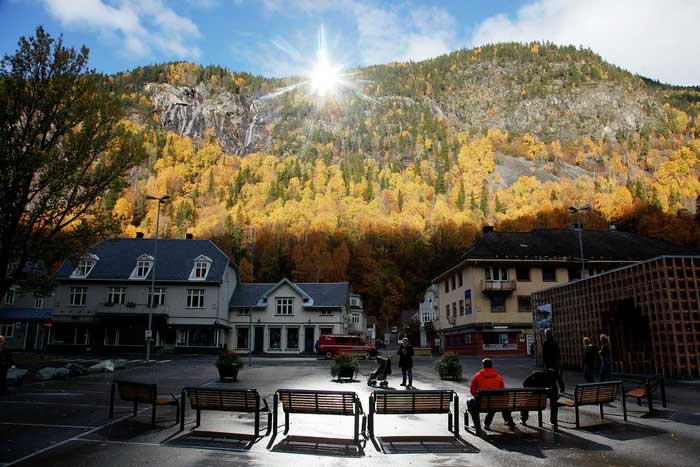
Between 1905-1916, entrepreneur Sam Eyde acquired the area of the waterfall to build a hydroelectric plant and establish the town of Rjukan. Aware of the sunlight deficiency issue, Sam had thought of erecting light-reflecting mirrors, but due to limited technology, he could not proceed.
The sun mirror project is considered a marvel of modern technology, as it requires precise engineering and design. Three large mirrors, each measuring about 17 square meters, were installed on the mountainside.
These mirrors will track the sun’s movement throughout the day, directing its rays into the central square of Rjukan. The installation of the sun mirrors has thus become a symbol of resilience and innovation, attracting visitors from all around the world.
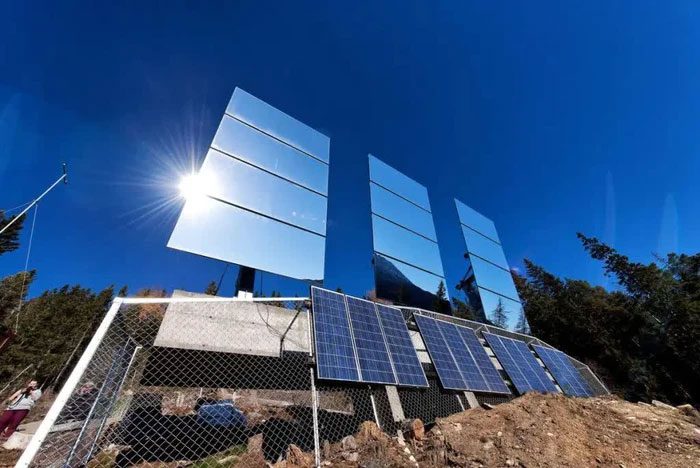
This special sunlight-catching system is referred to by the locals as “Solspeilet,” consisting of three large mirrors controlled by a computer to move according to the sun’s trajectory every 10 seconds, maximizing the amount of reflected light into the town.
The advent of the sun mirrors has profoundly impacted the residents of Rjukan. The town’s central square, which used to be engulfed in darkness during winter months, can now bask in sunlight, creating a warm and vibrant atmosphere. The mirrors have become a community gathering place, where people come together to socialize and enjoy precious moments of sunlight that had been lost during the winter months. The sun mirrors not only bring light but also instill a new sense of hope and unity among the people of Rjukan.








































